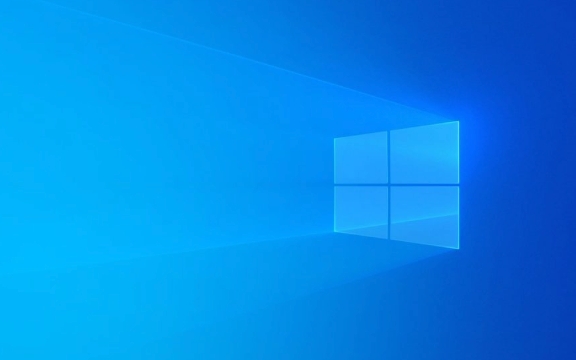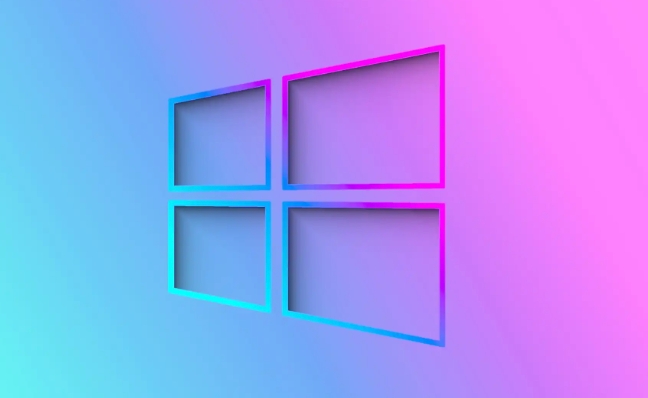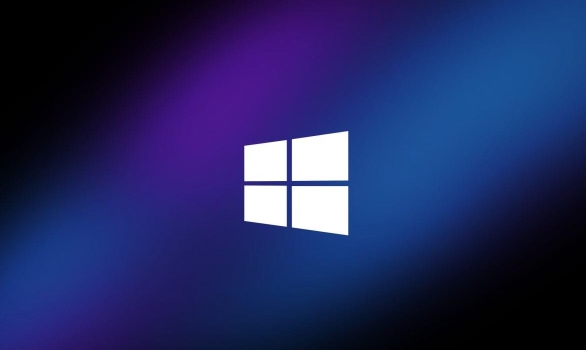Slow boot times in Windows 10 can be fixed by addressing startup bloat, outdated drivers, or hardware limitations. 1. Disable unnecessary startup programs via Task Manager’s Startup tab, focusing on high-impact apps like cloud storage or messaging software. 2. Enable Fast Startup through Power Options to reduce boot time using hybrid shutdown. 3. Check drive type and health—upgrade to an SSD if using an HDD, and run chkdsk or optimization tools to maintain drive performance. 4. Update Windows and essential drivers (storage, chipset, BIOS) through Windows Update and Device Manager, avoiding third-party updater tools. 5. Perform a clean boot using msconfig to disable non-Microsoft services and startup items, helping identify conflicting software. 6. Scan for malware with Windows Security and repair system files using sfc /scannow and DISM /Online /Cleanup-Image /RestoreHealth. Addressing these areas systematically resolves most slow boot issues, with SSD upgrades or clean installs as final options if performance remains poor.

Slow boot times in Windows 10 can be frustrating, but they’re usually fixable with a few targeted tweaks. The key is identifying what’s dragging down your startup and addressing it—whether it’s too many background programs, outdated drivers, or system settings that need adjusting. Here’s how to speed things up.

1. Disable Startup Programs
One of the biggest causes of slow boot times is too many apps launching automatically when Windows starts.
How to fix it:

- Press
Ctrl Shift Escto open Task Manager. - Go to the Startup tab.
- Sort by Startup impact—look for apps labeled "High" or "Medium."
- Right-click any unnecessary programs (like Spotify, Skype, or Adobe Updater) and select Disable.
Tip: Only disable apps you don’t need right when you start your PC. Keep antivirus and essential drivers enabled.
Common offenders include:

- Cloud storage apps (Dropbox, OneDrive)
- Messaging apps
- Printer or peripheral software
2. Enable Fast Startup
Fast Startup is a Windows feature that puts your system in a hybrid shutdown state, making boot times faster.
How to enable it:
- Open Control Panel > Power Options.
- Click Choose what the power buttons do.
- Click Change settings that are currently unavailable (requires admin rights).
- Check the box for Turn on fast startup (recommended).
- Click Save changes.
Note: Fast Startup may cause issues with dual-boot systems or some external devices. If you have compatibility problems, you can disable it later.
3. Check Your Drive Type and Health
Your storage drive has a huge impact on boot speed.
- HDD vs. SSD: If you’re still using a traditional hard drive (HDD), upgrading to an SSD is the single most effective upgrade for faster boot times.
-
Check drive health:
- Open Command Prompt as admin and run:
chkdsk C: /f /r
(This scans for disk errors—requires a restart.) - Use built-in tools like Defragment and Optimize Drives (search in Start menu). For SSDs, this runs optimization (not defrag); for HDDs, it defrags.
- Open Command Prompt as admin and run:
4. Update Windows and Drivers
Outdated system files or drivers can cause delays during boot.
- Go to Settings > Update & Security > Windows Update and install any pending updates.
- Update key drivers (especially storage, chipset, and BIOS) via Device Manager or your PC manufacturer’s website.
- Avoid third-party "driver updater" tools—they often do more harm than good.
5. Run a Clean Boot to Find Conflicts
If you're still seeing slow boots, a clean boot helps identify problematic background services.
Steps:
- Press
Win R, typemsconfig, and hit Enter. - In System Configuration, go to the Services tab.
- Check Hide all Microsoft services, then click Disable all.
- Go to the Startup tab and click Open Task Manager, then disable all startup items.
- Restart your PC.
If boot is fast now, re-enable services and startup apps gradually to find the culprit.
6. Scan for Malware and System Issues
Malware or corrupted system files can also slow things down.
- Run a full scan with Windows Security (or your installed antivirus).
- Open Command Prompt as admin and run:
sfc /scannow
This checks and repairs corrupted system files. - After that, run:
DISM /Online /Cleanup-Image /RestoreHealth
This fixes the Windows image if SFC fails.
Final Thoughts
Most slow boot issues in Windows 10 come down to startup bloat, an aging hard drive, or outdated software. Start with disabling startup apps and enabling Fast Startup—those are quick wins. If your PC still crawls, consider upgrading to an SSD or doing a clean Windows install as a last resort.
Basically, it’s not about one big fix—it’s about trimming the fat and keeping your system lean.
The above is the detailed content of How to fix slow boot times in Windows 10. For more information, please follow other related articles on the PHP Chinese website!

Hot AI Tools

Undress AI Tool
Undress images for free

Undresser.AI Undress
AI-powered app for creating realistic nude photos

AI Clothes Remover
Online AI tool for removing clothes from photos.

Clothoff.io
AI clothes remover

Video Face Swap
Swap faces in any video effortlessly with our completely free AI face swap tool!

Hot Article

Hot Tools

Notepad++7.3.1
Easy-to-use and free code editor

SublimeText3 Chinese version
Chinese version, very easy to use

Zend Studio 13.0.1
Powerful PHP integrated development environment

Dreamweaver CS6
Visual web development tools

SublimeText3 Mac version
God-level code editing software (SublimeText3)
 How to Change Font Color on Desktop Icons (Windows 11)
Jul 07, 2025 pm 12:07 PM
How to Change Font Color on Desktop Icons (Windows 11)
Jul 07, 2025 pm 12:07 PM
If you're having trouble reading your desktop icons' text or simply want to personalize your desktop look, you may be looking for a way to change the font color on desktop icons in Windows 11. Unfortunately, Windows 11 doesn't offer an easy built-in
 Fixed Windows 11 Google Chrome not opening
Jul 08, 2025 pm 02:36 PM
Fixed Windows 11 Google Chrome not opening
Jul 08, 2025 pm 02:36 PM
Fixed Windows 11 Google Chrome not opening Google Chrome is the most popular browser right now, but even it sometimes requires help to open on Windows. Then follow the on-screen instructions to complete the process. After completing the above steps, launch Google Chrome again to see if it works properly now. 5. Delete Chrome User Profile If you are still having problems, it may be time to delete Chrome User Profile. This will delete all your personal information, so be sure to back up all relevant data. Typically, you delete the Chrome user profile through the browser itself. But given that you can't open it, here's another way: Turn on Windo
 How to fix second monitor not detected in Windows?
Jul 12, 2025 am 02:27 AM
How to fix second monitor not detected in Windows?
Jul 12, 2025 am 02:27 AM
When Windows cannot detect a second monitor, first check whether the physical connection is normal, including power supply, cable plug-in and interface compatibility, and try to replace the cable or adapter; secondly, update or reinstall the graphics card driver through the Device Manager, and roll back the driver version if necessary; then manually click "Detection" in the display settings to identify the monitor to confirm whether it is correctly identified by the system; finally check whether the monitor input source is switched to the corresponding interface, and confirm whether the graphics card output port connected to the cable is correct. Following the above steps to check in turn, most dual-screen recognition problems can usually be solved.
 Fixed the failure to upload files in Windows Google Chrome
Jul 08, 2025 pm 02:33 PM
Fixed the failure to upload files in Windows Google Chrome
Jul 08, 2025 pm 02:33 PM
Have problems uploading files in Google Chrome? This may be annoying, right? Whether you are attaching documents to emails, sharing images on social media, or submitting important files for work or school, a smooth file upload process is crucial. So, it can be frustrating if your file uploads continue to fail in Chrome on Windows PC. If you're not ready to give up your favorite browser, here are some tips for fixes that can't upload files on Windows Google Chrome 1. Start with Universal Repair Before we learn about any advanced troubleshooting tips, it's best to try some of the basic solutions mentioned below. Troubleshooting Internet connection issues: Internet connection
 Want to Build an Everyday Work Desktop? Get a Mini PC Instead
Jul 08, 2025 am 06:03 AM
Want to Build an Everyday Work Desktop? Get a Mini PC Instead
Jul 08, 2025 am 06:03 AM
Mini PCs have undergone
 How to clear the print queue in Windows?
Jul 11, 2025 am 02:19 AM
How to clear the print queue in Windows?
Jul 11, 2025 am 02:19 AM
When encountering the problem of printing task stuck, clearing the print queue and restarting the PrintSpooler service is an effective solution. First, open the "Device and Printer" interface to find the corresponding printer, right-click the task and select "Cancel" to clear a single task, or click "Cancel all documents" to clear the queue at one time; if the queue is inaccessible, press Win R to enter services.msc to open the service list, find "PrintSpooler" and stop it before starting the service. If necessary, you can manually delete the residual files under the C:\Windows\System32\spool\PRINTERS path to completely solve the problem.
 How to run Command Prompt as an administrator in Windows 10?
Jul 05, 2025 am 02:31 AM
How to run Command Prompt as an administrator in Windows 10?
Jul 05, 2025 am 02:31 AM
To run command prompts as administrator, the most direct way is to search through the Start menu and right-click "Run as administrator"; secondly, use the Win X shortcut menu to select "Command Prompt (Administrator)" or "Windows Terminal (Administrator)"; you can also open the run window through Win R and enter cmd and press Ctrl Shift Enter to force running as administrator; in addition, you can set shortcut properties to achieve automatic running as administrator. All the above methods require administrator permission and confirmation through UAC. Pay attention to security risks during operation.







